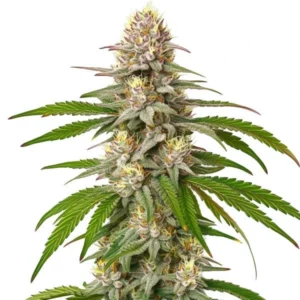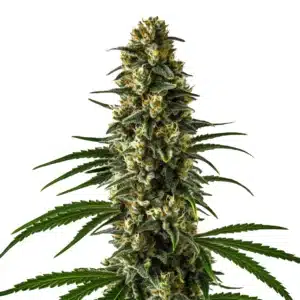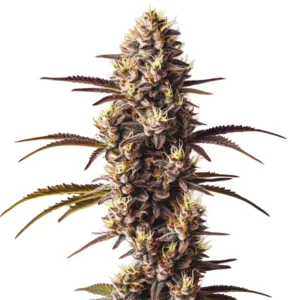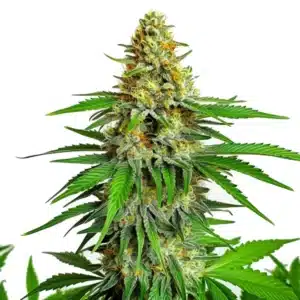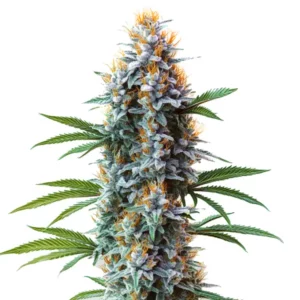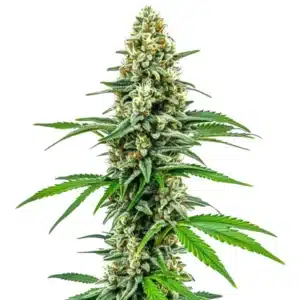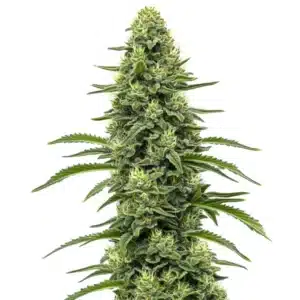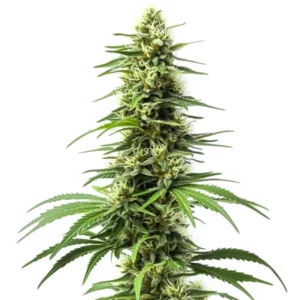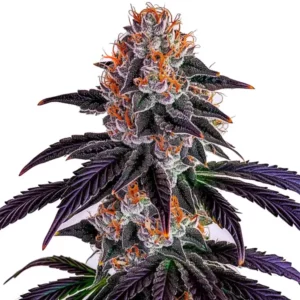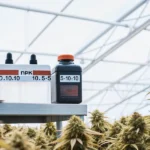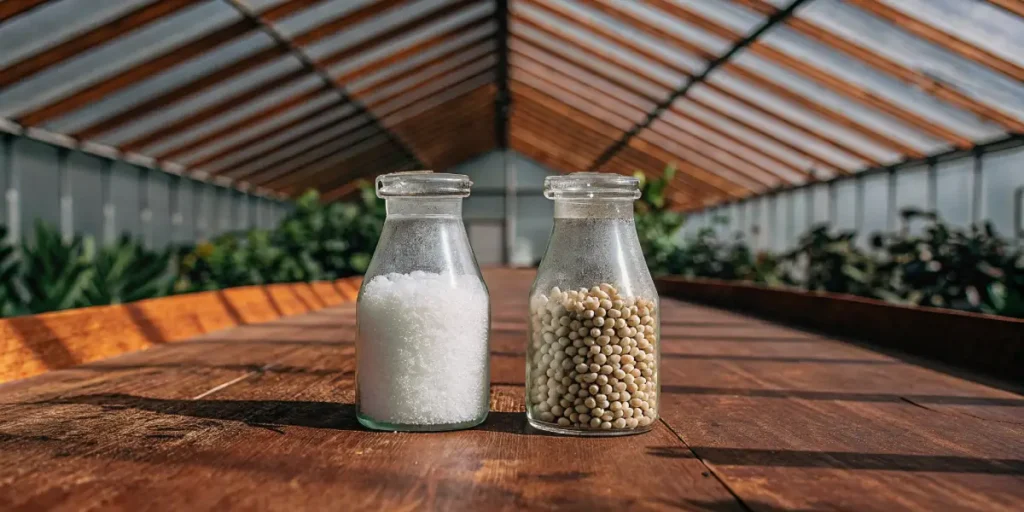
Nitrate vs Ammonium in Cannabis
When it comes to growing cannabis, knowing the nutrients that your plants need is crucial. Two primary forms of nitrogen, nitrate and ammonium, play a significant role in cannabis cultivation. Understanding nitrate vs ammonium in cannabis helps growers decide which source of nitrogen to use, as the balance between them can directly impact plant health, growth speed, and overall yield.
Nitrogen is vital for the growth of cannabis plants. It helps in the formation of proteins, chlorophyll, and other critical components. Nitrate and ammonium are two different nitrogen sources that plants can absorb. Each has distinct characteristics that affect plant growth differently.
Recommended Strains
Pineapple Express
|
|
THC | 18% - 22% (Medium) |
|
|
Type | Feminized |
|
|
Yield | Medium |
|
|
Phenotype | 40% Indica / 60% Sativa |
Girl Scout Cookies
|
|
THC | 18% - 25% (Medium) |
|
|
Type | Feminized |
|
|
Yield | High |
|
|
Phenotype | 60% Indica / 40% Sativa |
Knowing the difference between nitrate and ammonium in cannabis can help you make informed decisions about fertilization strategies. This knowledge can ultimately lead to healthier plants and better yields.
Nitrate vs Ammonium Impact on Cannabis Growth
Both nitrate and ammonium are absorbed by the roots, but they influence the plant’s growth in unique ways. Nitrate tends to be more mobile in the soil, making it readily available to plants. This form of nitrogen often promotes stronger stem and leaf development.
In contrast, ammonium is less mobile and can lead to faster vegetative growth but may also increase the risk of root burn if not managed correctly. Balancing these two can be key to optimizing your cannabis growth. For example, strains like Pineapple Express can benefit from a balanced approach.
Knowing the nitrate vs ammonium impact on cannabis growth is essential for tailoring your fertilization approach. By evaluating the specific needs of your cannabis strain, you can adjust the balance between these nitrogen sources to match the growth phase and environmental conditions.
Moreover, the choice between nitrate vs ammonium in cannabis can be influenced by the desired outcome. For growers aiming for rapid vegetative development, a higher ammonium content might be favored, while those targeting robust flowering might lean towards nitrate-rich solutions.
Promos & Deals
Cannabis Nutrient Absorption: Nitrate vs Ammonium
Cannabis plants have unique nutrient absorption characteristics. They can absorb nitrate and ammonium at different rates based on environmental factors. Temperature, pH levels, and soil type can all influence how well these nutrients are taken up by the plant.
For instance, in cooler climates, nitrate might be absorbed more efficiently, while in warmer conditions, ammonium might be preferable. Strains like Blue Dream are known for their adaptability to various environmental conditions, making them ideal for testing different nitrogen sources.
The dynamics of cannabis nutrient absorption nitrate vs ammonium are complex and vary with external conditions. Monitoring and adjusting environmental factors like pH and temperature can significantly enhance nutrient uptake and utilization.
Effective management of these factors ensures that the plants receive an optimal balance of nitrate and ammonium, leading to healthier growth patterns and improved resilience against environmental stresses.
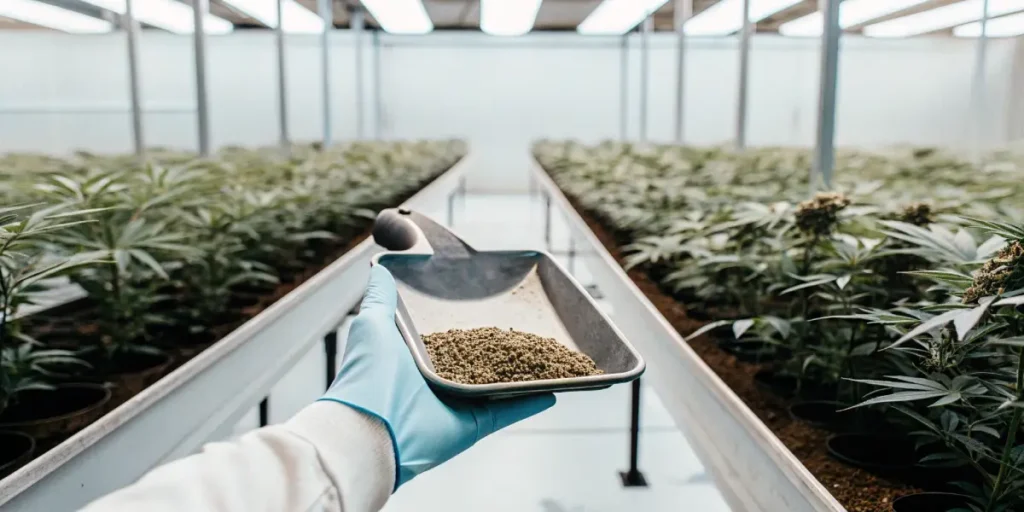
Best Nitrogen Source for Cannabis: Nitrate vs Ammonium
Choosing the best nitrogen source for cannabis can depend on your specific growing conditions and objectives. If you aim for robust vegetative growth, a higher ammonium ratio could be beneficial. However, for flowering and yield, nitrate might be more advantageous.
Experienced growers often experiment with different ratios throughout the growing cycle. For example, during the early growth stage, a strain like Girl Scout Cookies might thrive with more ammonium, while later stages could benefit from increased nitrate levels.
Determining the best nitrogen source for cannabis nitrate vs ammonium requires a nuanced knowing of the plant’s lifecycle and environmental conditions. Testing and observation can help in optimizing the nitrogen mix to suit specific growth phases.
By focusing on the nitrate vs ammonium balance, growers can enhance plant health, maximizing both vegetative growth and flowering potential. Tailored approaches contribute to achieving the desired crop quality and yield.
- Early vegetative stage: higher ammonium
- Mid to late vegetative stage: balanced mix
- Flowering stage: higher nitrate
Nitrate vs Ammonium Cannabis Yield Comparison
Growers often wonder how nitrate and ammonium affect cannabis yield. While both forms of nitrogen are essential, their impact can vary. Nitrate tends to enhance flowering, leading to potentially higher yields.
Ammonium, on the other hand, can accelerate vegetative growth. This might result in bushier plants but not necessarily higher yields. Balancing these two forms can help optimize cannabis yields, especially in strains known for their high production, like Blue Dream.
The nitrate vs ammonium cannabis yield comparison underscores the need for strategic nutrient management. While nitrate may boost yield by enhancing flowering, ammonium supports robust foliage and stem development.
To achieve maximum yield, a careful equilibrium between nitrate and ammonium is necessary. This involves adjusting nutrient ratios based on growth stages and specific strain requirements, ensuring the plant’s energy is directed effectively.
Optimizing Cannabis Fertilization: Nitrate vs Ammonium
To optimize cannabis fertilization, understanding the plant’s life cycle and nutrient needs is crucial. In the early stages, a higher ammonium ratio can support rapid growth. As the plant matures, shifting towards nitrate can enhance flowering and yield.
Monitoring soil pH is vital as it affects nutrient availability. A balanced pH allows for better absorption of both nitrate and ammonium. Regular soil testing can guide adjustments in your fertilization strategy.
Optimizing cannabis fertilization nitrate vs ammonium involves continuous monitoring and adjustments. Environmental changes and plant responses should guide nutrient management decisions to promote optimal growth and yield.
By leveraging data from soil tests and plant performance, growers can fine-tune their fertilization approaches, fostering healthier plants and potentially higher yields through a well-balanced nitrogen strategy.
- Test soil pH regularly
- Adjust nutrient ratios based on plant stage
- Balance nitrate and ammonium for optimal growth
For best results, consider using a mix of both nitrate and ammonium throughout the growth cycle. This approach can lead to healthier plants and improved yields, particularly in adaptable strains like Pineapple Express and Girl Scout Cookies.
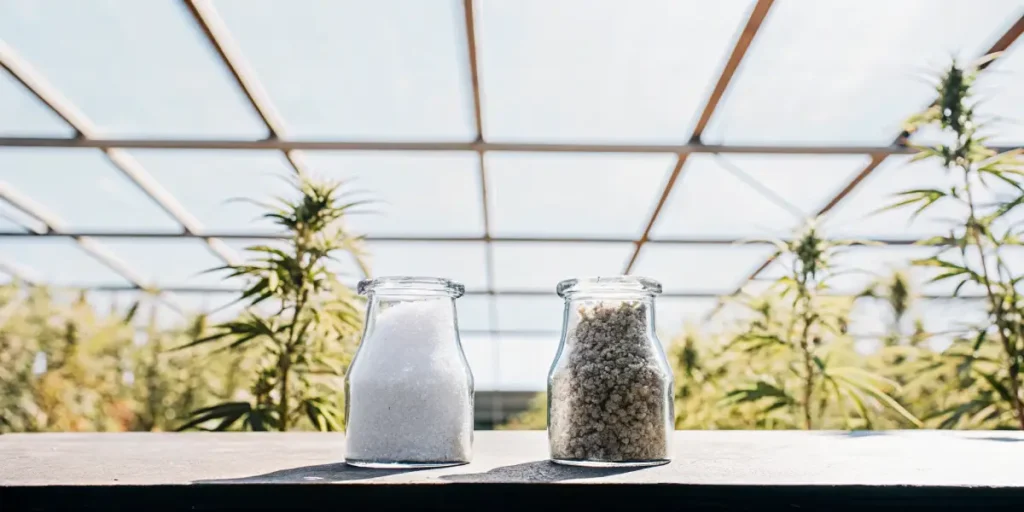
FAQs
What is the difference between nitrate and ammonium in cannabis?
Nitrate and ammonium are both forms of nitrogen that cannabis plants use for growth. Nitrate is more mobile in soil, promoting strong stem and leaf development, while ammonium is less mobile and can encourage rapid vegetative growth. Choosing the right balance between these two can affect overall plant health and yield.
It’s essential to consider your growing environment when deciding between nitrate and ammonium. Factors like soil pH, temperature, and plant stage can influence which form is more beneficial at a given time.
Knowing nitrate vs ammonium in cannabis involves evaluating the specific growth requirements of your plants. Environmental conditions and plant growth stages are central to determining the most effective nitrogen source.
Incorporating both forms throughout the growth cycle allows growers to maximize plant potential, ensuring robust vegetative growth and fruitful flowering, ultimately enhancing yield and plant quality.
How does nitrate vs ammonium impact cannabis growth?
The impact of nitrate and ammonium on cannabis growth is significant. Nitrate supports healthy growth by enhancing stem and leaf development, while ammonium can accelerate vegetative growth, leading to bushier plants. Balancing these two forms can help optimize growth and yield.
Growers must adjust their nutrient mix based on the plant’s stage and environmental conditions. For instance, cooler climates might favor nitrate absorption, whereas warmer conditions might be more suitable for ammonium.
Exploring the nitrate vs ammonium impact on cannabis growth reveals opportunities for tailored nutrient management. By aligning fertilizer strategies with growth phases, growers can influence plant structure and productivity.
Effective nutrient management involves continuous monitoring and adjustments, ensuring that plants receive the optimal balance of nitrate and ammonium to support healthy growth and maximize yield potential.
What is the best nitrogen source for cannabis?
The best nitrogen source for cannabis depends on the plant’s growth stage and the grower’s goals. Ammonium can support rapid vegetative growth, while nitrate is often better for flowering and yield. A balanced approach that adjusts the ratio of these two forms throughout the growth cycle can be most effective.
Using a mix of nitrate and ammonium allows for flexibility and adaptability to different growing conditions, which can be especially beneficial for versatile strains like Pineapple Express and Blue Dream.
Choosing the best nitrogen source for cannabis nitrate vs ammonium involves a dynamic approach that considers plant needs at various stages. This flexibility helps in achieving desired growth outcomes and maintaining plant health.
Ultimately, successful nutrient management requires an understanding of plant physiology and environmental influences, enabling growers to adapt their strategies to optimize cannabis growth and yield.
How do I optimize cannabis fertilization with nitrate and ammonium?
Optimizing cannabis fertilization involves understanding the nutrient needs at each growth stage. In the early stages, higher ammonium can support rapid growth. As the plant matures, increasing nitrate can enhance flowering. Monitoring soil pH and nutrient levels is essential for this process.
Regular soil testing and adjustments based on plant observations can help maintain the right balance of nitrate and ammonium. This approach can lead to healthier plants and improved yields, especially in adaptable strains like Girl Scout Cookies.
To optimize cannabis fertilization nitrate vs ammonium, growers should focus on creating and maintaining the right balance between these nitrogen forms. This ensures that plants receive the necessary nutrients throughout their lifecycle.
By actively managing soil conditions and responding to plant cues, growers can fine-tune their fertilization strategies, leading to enhanced plant performance and potentially higher yield outcomes.
Can nitrate and ammonium affect cannabis yield?
Nitrate and ammonium can indeed affect cannabis yield. Nitrate tends to support flowering, potentially leading to higher yields, while ammonium can boost vegetative growth. However, excessive ammonium might cause nutrient imbalances, affecting yield negatively.
Balancing these two forms of nitrogen and ensuring proper nutrient management throughout the growth cycle can help maximize yield. Regular monitoring and adjustments are essential for achieving the best results.
Through a nitrate vs ammonium cannabis yield comparison, growers can identify the most effective nitrogen mix for their specific growing conditions. This knowledge allows for targeted interventions that enhance yield and plant health.
Careful management of nitrogen sources supports optimal flowering and growth, reducing the risk of nutrient imbalances and ensuring that the plant’s energy is directed towards maximizing yield potential.


